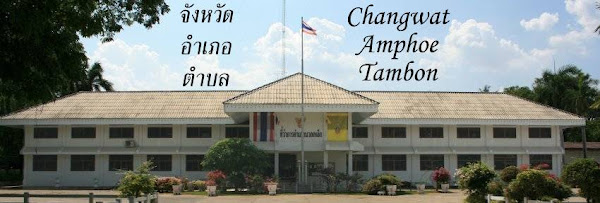Being in Thailand during the election campaign had the advantage of being able to see the many posters placed all over the city - slogans to train my Thai, parties I never heard of (and probably won't hear about after the election either), constituency candidates from being boringly normal to somewhat strange, these posters offer a wide variety. Though fellow blogger Vaitor had already posted a
good overview on these posters, I cannot hesitate to post one myself stretching the topic range of this blog a bit.

In Bangkok every street is full of these posters, except the street passing Chitralada Palace and some areas around Grand Palace, probably declared off-limit by the Election Commission. However, in contrast to this within Surat Thani city there were just a handful of posters at all, only along the highway outside the city they were a more common sight. And while in Bangkok it has constituency candidates and policy posters mixed, in Surat there Phuea Thai had almost only their slogan posters and almost none with the constituency candidates, for the Democrats it were only the candidates, usually together the Abhisit. Looks like Phuea Thai sees no chance in winning the constituencies in the Democrat homeland, wonder if it is other way round in Isaan? The reason why Bangkok has the highest election poster density is quite obvious - with more than 10% of the electorate living there a poster can reach many more potential voters in Bangkok than in the rural areas.

Another general observation - I have only seen Democrat posters defaced, even in the most literal way as with the poster where one can now pose as Prime Minister. Maybe a first sign of the potential result?
Since showing all my photos around the election would make this posting way to long, the full set can be found at
this picasa album. If anyone wants to use them, they are
cc-by - just taking these photographs wasn't an intellectual work. I might even add a few more on my last days of this vacation.
First the two major posters by Phuea Thai. To me as an observer the slogan seems like the best way to shoot the own foot - it reads "Thaksin thinks, Phuea Thai does". It just reminds everybody that the real name of the party is Phuea Thaksin, and if someone hasn't noticed from the slogan he also made his sister the front runner of the campaign. I wonder if those who support Thaksin really need this kind of reminder on what to vote, as these posters also make sure none of the opponents of Thaksin will vote for Phuea Thai by accident.
Interesting are those posters where two parties reply each other. The first example shows Phuea Thai saying "Think New, Do New", on which Bhum Jai Thai replies with "No need to think new, do new - but think good, do good".
On the transportation issues, it has the Democrats promising twelve new lines for the Skytrain (meaning not just the BTS Skytrain, but also MRTA and maybe other operators), whereas Phue Thai just offers ten. As during Thaksins time in office any new lines were effectively blocked but now several lines are under construction, I much more believe the Democrats in their promise.
Unintentionally the poster of Chart Pattana Puea Pandin Party candidate Sophon Damnui (โสภณ ดำนุ้ย) featuring the panda Lin Ping fits great with the "No animals" campaigns on what remains of the PAD. At one place the two posters where even placed near each other as
found in the Thai fail blog. A more detailed explanation of the panda poster can be found at
fellow blogger Saksith.
And as the final pair of posters - if the election were a beauty contest, my vote certainly would go to Dr. Rachada (
รัชดา ธนาดิเรก), Democrat candidate for Bangkok constituency 33. But of course any collection of Thai election posters would be incomplete without Chuwit (ชูวิทย์ กมลวิศิษฎ์), so I placed him as the second part of this unequal pair.

















